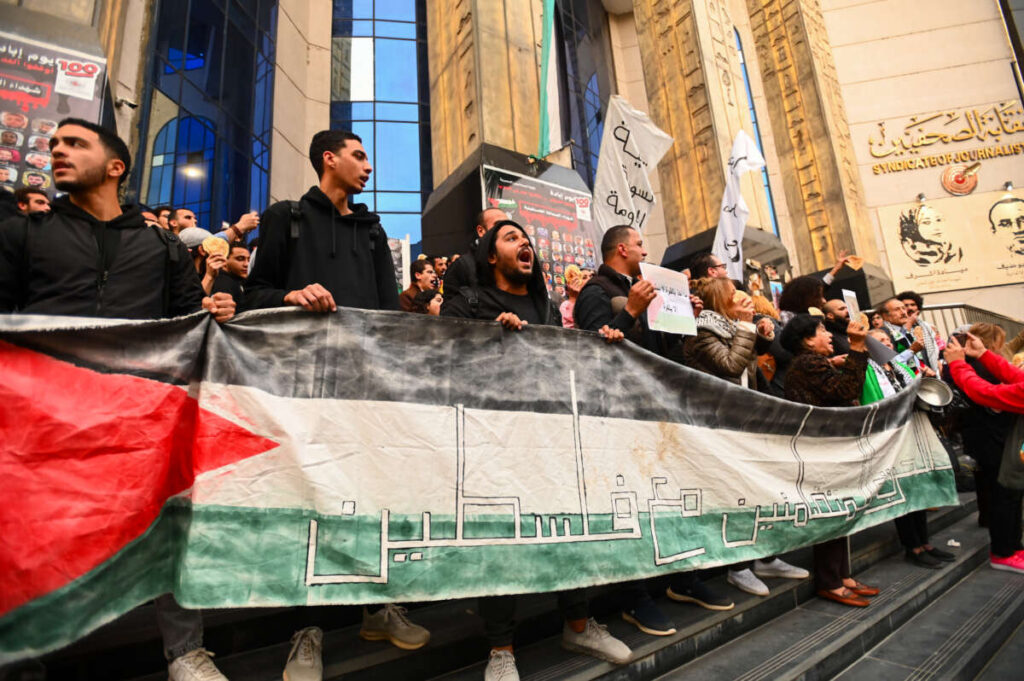Egypt in Crisis: Economic Turmoil, Repression, and the Shadow of Gaza
Thirteen years after the Egyptian Revolution ousted long-time dictator Hosni Mubarak, Egypt finds itself facing mounting social, political, and economic challenges. The post-Mubarak era, initially marked by hopes for democratic reform, was abruptly curtailed in July 2013 by a military coup led by then-Field Marshal Abdel Fattah el-Sisi. Since then, el-Sisi has solidified his rule as Egypt’s president, overseeing a regime characterized by severe repression and economic instability.
Socio-Political Unrest and Repression
The el-Sisi government has systematically suppressed protest movements and workers’ struggles, especially those expressing solidarity with the Palestinian cause. The Israeli attack on Gaza in October 2023 ignited public outrage in Egypt. Despite the severe risks of state retaliation, including imprisonment, citizens have taken to the streets in sporadic demonstrations. However, these protests are often violently quashed by security forces, revealing the el-Sisi regime’s deep commitment to maintaining its alliance with the United States and its hegemonic interests in the Middle East and North Africa.
Activists and ordinary citizens alike face a landscape of intense surveillance and repression. Mohamed, Musa, and Laila, three revolutionary activists from Cairo, explain that the regime’s strategy involves instilling fear. Laila recounts how even minor attempts at protest are forcefully suppressed, with universities and professional syndicates tightly monitored to prevent dissent.
Economic Crisis Deepens
Egypt’s economic situation is dire. More than half of the population lives below the poverty line, surviving on less than $2 a day. Unemployment rates are soaring, particularly among university graduates. The Egyptian pound has plummeted in value from around six to fifty pounds per US dollar since el-Sisi took power. This devaluation has spiked the cost of essential imports, notably food, exacerbating the country’s dependence on volatile global markets.
El-Sisi’s administration focuses on costly mega-projects like the construction of a new capital city in the desert east of Cairo, estimated at $60 billion, and a high-speed railway by Siemens. While these projects are intended to showcase progress, they starkly contrast with the deteriorating national rail network and the day-to-day struggles of ordinary Egyptians. The funds for these ventures are sourced through extensive foreign loans and investments, particularly from the EU, the IMF, and Gulf states like the UAE. El-Sisi’s regime leverages Egypt’s strategic position as a gatekeeper for migration into Europe, earning financial backing in return.
The Role of the Military and Foreign Investment
Military involvement in Egypt’s economy has grown, with military-affiliated companies securing lucrative contracts and enjoying symbiotic relationships with private capital. This aligns the interests of the military elite with the regime, ensuring their loyalty through various state-provided benefits.
The UAE’s $35 billion investment in Egypt exemplifies the increasing foreign influence on Egypt’s economy. These investments, primarily in tourism and real estate, may bolster specific sectors but fail to address widespread impoverishment and unemployment.
El-Sisi’s Governance and Opposition
El-Sisi governs through a culture of fear, maintaining tight control over political discourse and suppressing dissent. Political parties with genuine grassroots support are absent, and even the remnants of the once-powerful Muslim Brotherhood are either imprisoned or in exile.
The regime has exploited ethnic and religious tensions, using scapegoating tactics against minorities such as Coptic Christians to justify draconian measures against groups like the Muslim Brotherhood. El-Sisi presents himself as a defender of order against purported chaos instigated by these groups.
Independent Unions and Labor Struggles
Independent unions flourished towards the end of Mubarak’s rule and during the 2011 revolution but have since been dismantled. Government-controlled unions are now the norm, and even minor labor disputes face severe repression. However, crackdowns have not entirely eradicated collective labor actions. The recent strike at the Mahalla al-Kubra textile mill, led by women, signified a potential resurgence in workplace activism.
Revolutionary Prospects and Leftist Strategy
According to Mohamed, revolutionary figures from Egypt’s leftist movement, while demoralized, have retained vital experience and insights. Young Egyptians, driven by economic hardship and political frustration, are increasingly receptive to revolutionary ideologies. The left seeks to harness this momentum, advocating for deeper understanding and strategic planning to prepare for future upheavals.
El-Sisi’s regime leaves little room for political maneuvering, filling the vacuum with state apparatus and leaving him solely accountable for the nation’s woes. Economic instability and political repression have created a precarious situation, where even tightly controlled dissent may ignite broader challenges to his rule.
As the economic crisis festers and international support wanes, Egypt stands at a critical juncture. The ongoing solidarity for Gaza highlights regional tensions, and the left sees these moments as opportunities for mobilizing resistance against el-Sisi’s authoritarian regime. Egypt’s future remains uncertain, but one thing is clear: the seeds of discontent are deeply sown, and the potential for revolutionary change continues to simmer beneath the surface.
For more information on Egypt’s current state and its leadership, visit the official website of the Egyptian presidency.
